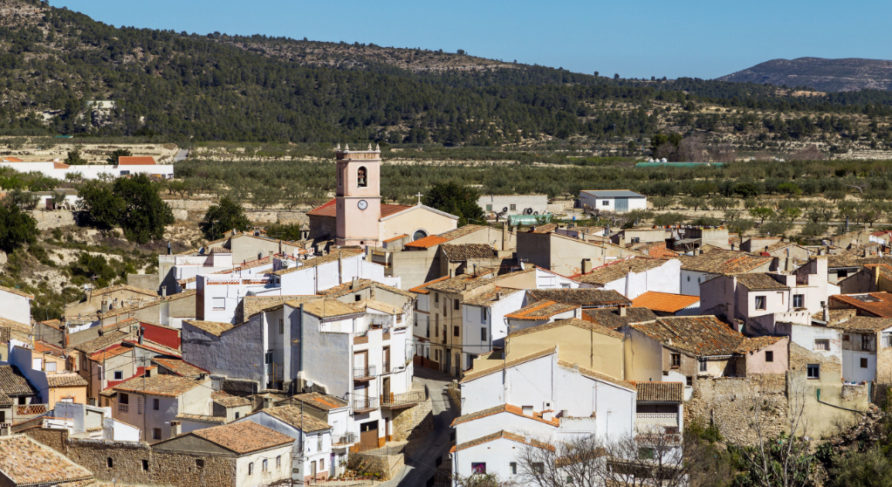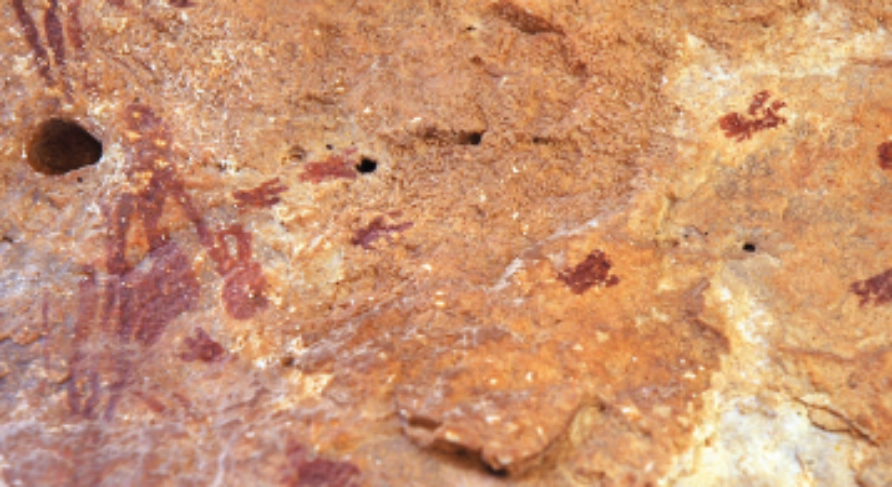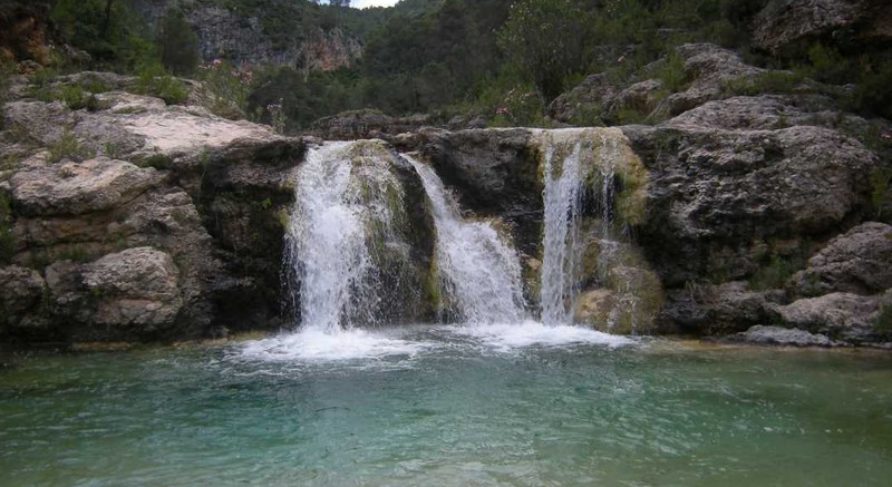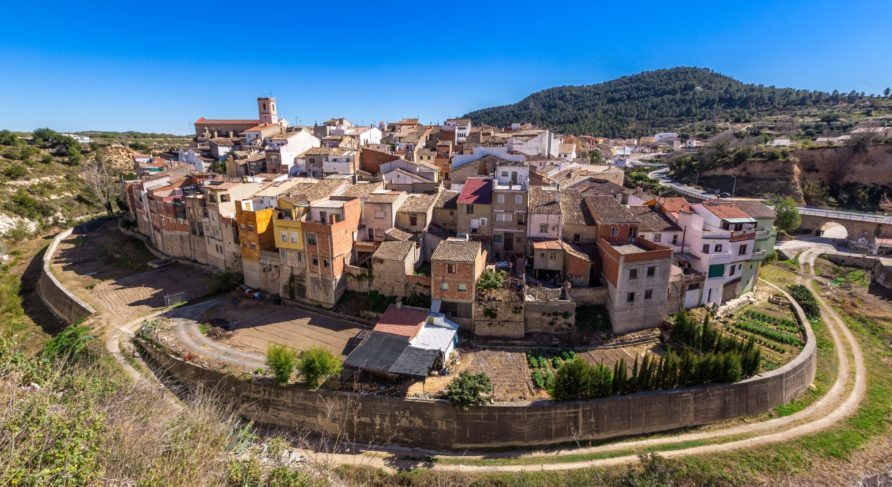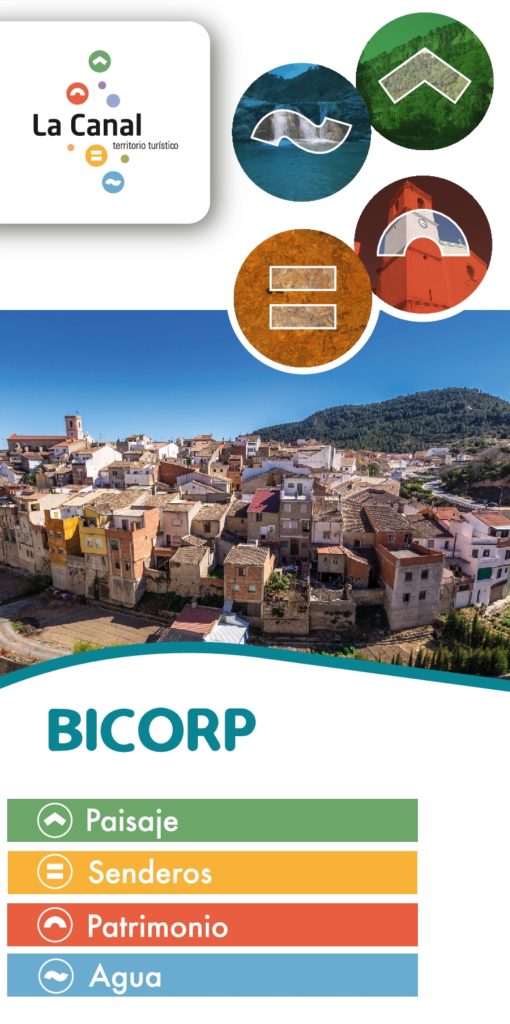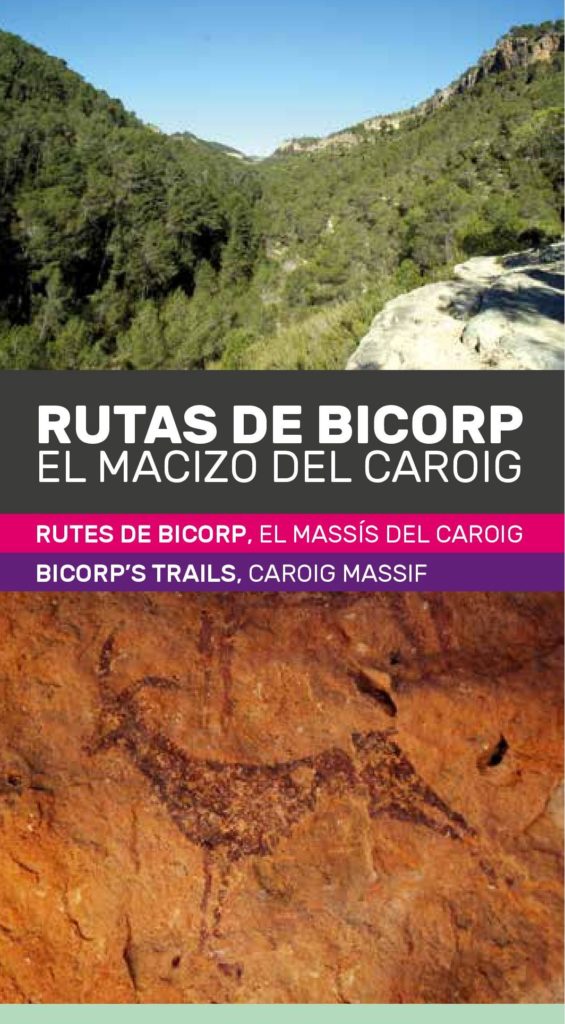Bicorp was originally a Moorish farmstead built on a meander of the Barranco Moreno ravine that offered it natural protection and water for its vegetable plots. A fortress was built in the narrow pass where the meander comes closest together, it was rebuilt after 1555 as a Renaissance-style castle-palace by Lluís Castellà de Vilanova, the first baron of Bicorp.
In Plaza del Castillo, where we begin our urban route, you can observe a classicist-style gateway and the blocks of stone from what were once two old towers. From here we reach the Bicorp Ecomuseum, the Archaeological, Ethnological and Paleontological Heritage Interpretation Centre that focuses on the cave art from the different archaeological sites in the area, which have been awarded World Heritage status by UNESCO.
Walking through the historic centre from Calle San Antonio, we discover narrow streets, such as Rosales, Larga, Cazuma, Iglesia, etc. which have retained the charm of their Moorish layout and simple Mediterranean architecture that is well-preserved and rich in decorative nuances. Grilles with flowerpots, artistic doors of carved wood and mural paintings with religious motifs can be found everywhere. Some of these properties have been fitted out as accommodation and converted into rural holiday homes. Our route leads us to the 18th-century Church of San Juan Evangelista (St. John the Evangelist), a work in an austere Baroque style, which was partially rebuilt in 1960, with work on the bell tower and barrel vault roof. The Communion Chapel with a dome over pendentives is a decorative delight in the baroque style.
Further down from the church are the alleys and sloping streets of the Raval “quarter”, through which you descend to the river. There, a bridge and the Fuente de la Rambla spring are located, with the adjacent La Chirrichana wash house. From opposite El Raval, on the climb up the road towards the sports centre, it is possible to take in a truly beautiful view of the bend in the meander and the town centre of Bicorp, at the foot of which and in the foreground lie the vegetable plots of La Rambla. There are also other vantage points in the town such as La Piñeta and El Olmiquio, with views over the aforementioned Barranco Moreno ravine.
The traditional cuisine is delicious: it is worth trying the gazpachos (tomato-based stew) and the typical sweet dishes produced in its homes and bakeries.
The town celebrates the Festivals of the Holy Cross and St. John the Evangelist (May), with the sharing out of blessed rolls and a pilgrimage, and its patron saint festivals (August) with a Moors and Christians procession (both declared to be of Tourist Interest).
The natural environment around Bicorp is outstanding and can be explored through an extensive network of paths passing over impressive rounded hills with dense pine forests and alongside pools of crystalline water perfect for cooling down. The Benefetal and River Fraile recreational area, the Barranco Moreno ravine with its cave art route; the source of the Cazuma river and the Gola de Lucino gorge, a geological wonder carved out by water; the Las Pedrizas Fort, which, in 1609, housed the soldiers who crushed the Moorish revolt. However, undoubtedly the heritage treasure of Bicorp are the Spider Caves with their famous cave art scenes representing a honey-gatherer.




